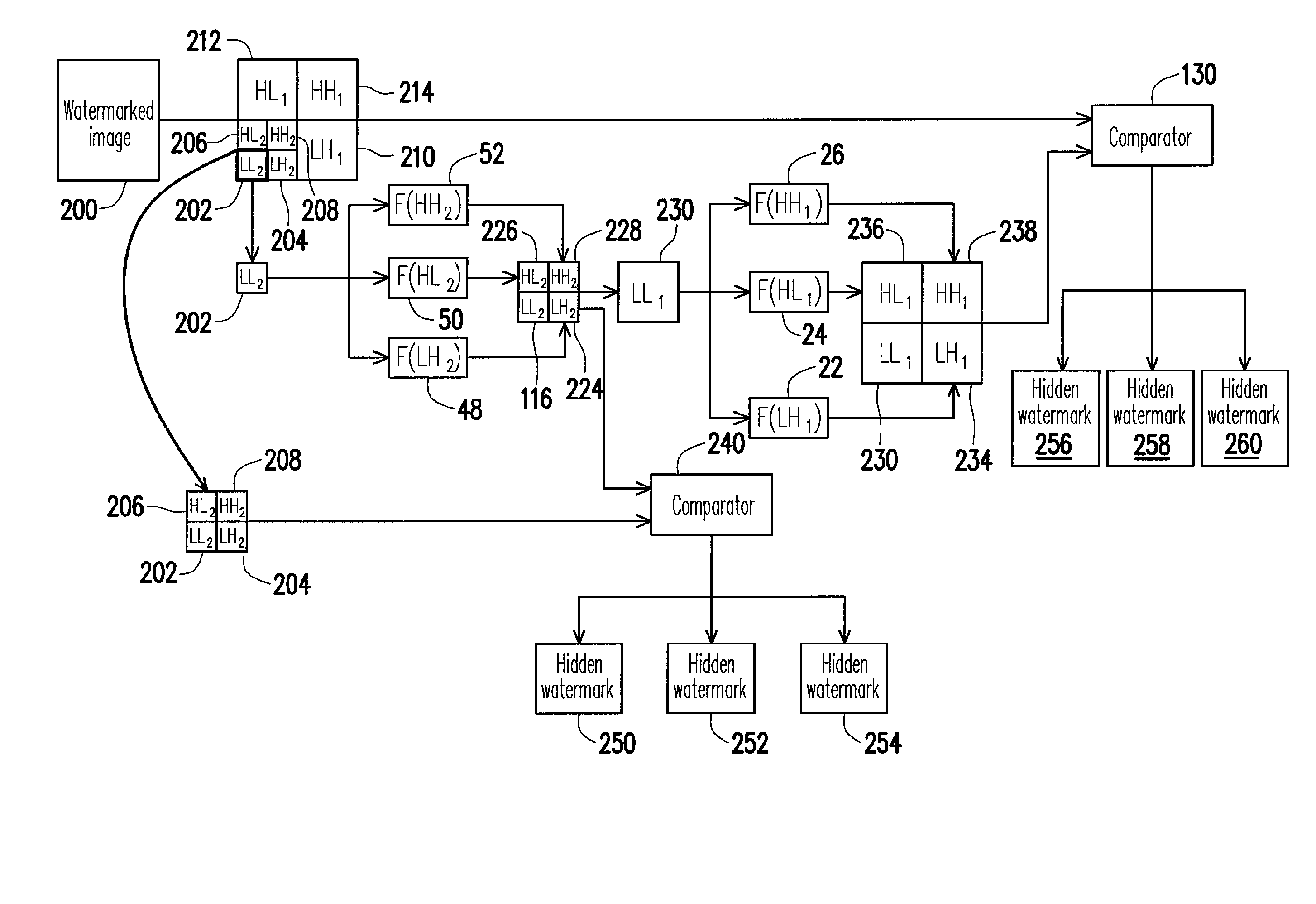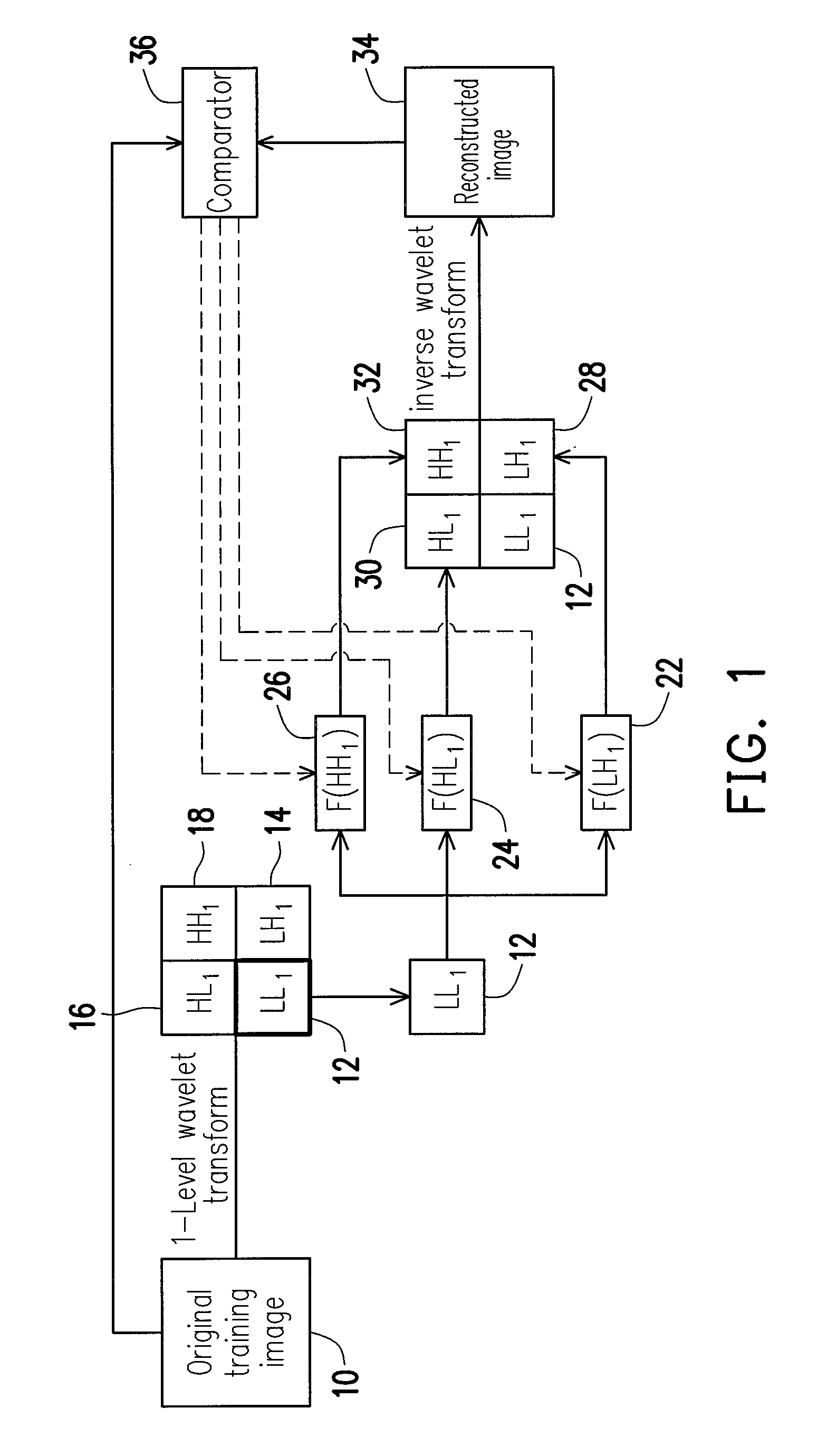Blind wavelet-based watermarking method
a wavelet and watermarking technology, applied in image watermarking, digital transmission, instruments, etc., can solve problems such as information security, embezzlement, interpolation and allonym transactions, copyright approval and verification of network transmission of valuable mediums such as images, films and music, and become a significant issue for medium owners
- Summary
- Abstract
- Description
- Claims
- Application Information
AI Technical Summary
Benefits of technology
Problems solved by technology
Method used
Image
Examples
Embodiment Construction
[0063]Before performing the blind wavelet-based watermarking method of the present invention, some filters for reconstructing images would be trained. Each of the trained filters could be termed as a least-mean-square (LMS) filter. Please refer to FIG. 1, which is a schematic diagram showing the procedure for transforming and reconstructing images via three LMS filters 22, 24 and 26. Firstly, several training images are processed by wavelet transform. For example, after a 1-level wavelet transform, each of the training images is decomposed into four subbands LL1, LH1, HL1 and HH1. In each of the LL1, LH1, HL1 and HH1 subbands, a corresponding data set of the training image is reserved. For instance, as shown in FIG. 1, an original training image 10 is decomposed into a first data set 12 in the LL1 subband, a second data set 14 in the LH1 subband, a third data set 16 in the subband, and a fourth data set 18 in the subband HH1. Generally, the data set in the subband LL1 contains the l...
PUM
 Login to View More
Login to View More Abstract
Description
Claims
Application Information
 Login to View More
Login to View More - R&D
- Intellectual Property
- Life Sciences
- Materials
- Tech Scout
- Unparalleled Data Quality
- Higher Quality Content
- 60% Fewer Hallucinations
Browse by: Latest US Patents, China's latest patents, Technical Efficacy Thesaurus, Application Domain, Technology Topic, Popular Technical Reports.
© 2025 PatSnap. All rights reserved.Legal|Privacy policy|Modern Slavery Act Transparency Statement|Sitemap|About US| Contact US: help@patsnap.com



